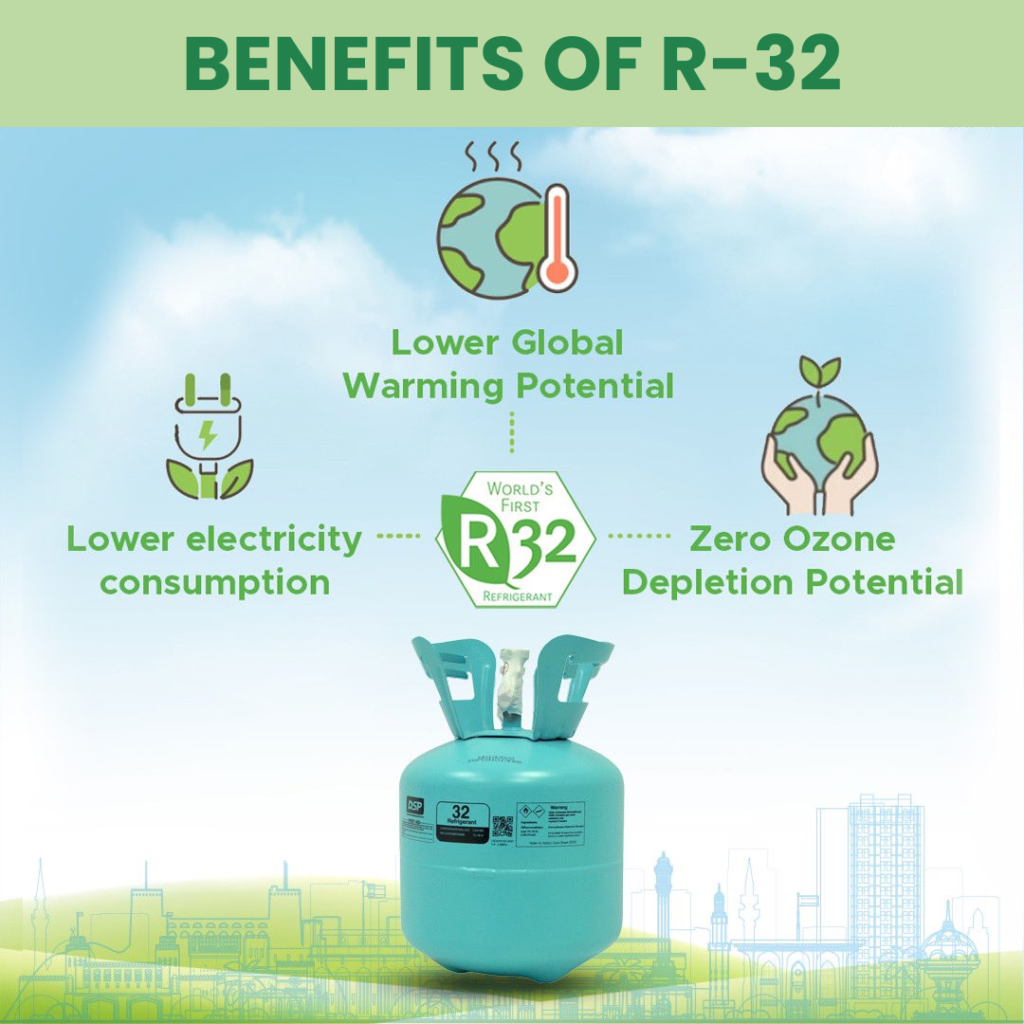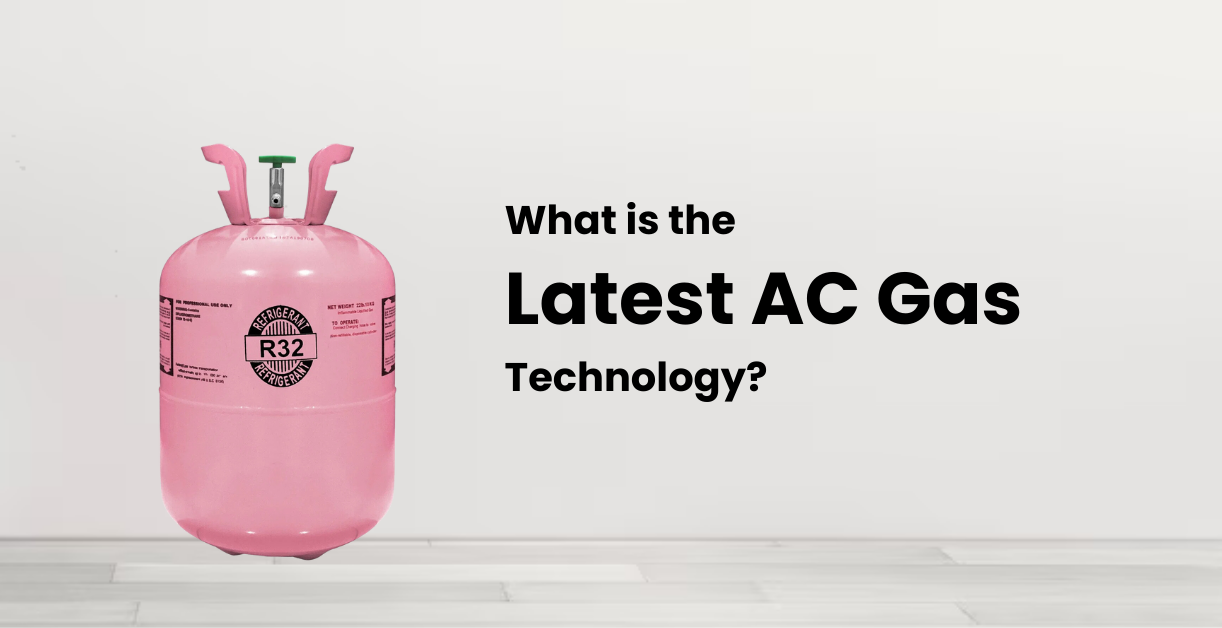Air conditioning technology has advanced significantly over the years, particularly with the development of new refrigerants, commonly called “AC gas.” These innovations are driven by the need for more energy-efficient, environmentally friendly, and effective cooling solutions. In this article, we’ll explain the latest refrigerant technologies, their benefits, common myths, and how they shape the future of air conditioners.
Understanding Refrigerants and Their Importance
Refrigerants are vital components of air conditioning systems. They absorb heat from the indoor environment and release it outside, cooling the air inside a building. The type of refrigerant used directly impacts the efficiency, environmental effects, and overall performance of the air conditioning unit.
The Evolution of Refrigerant Technologies
The types of refrigerants used in air conditioning systems have undergone significant changes over the years, largely due to environmental concerns and regulatory pressures. Initially, chlorofluorocarbons (CFCs) were widely used, but their detrimental effects on the ozone layer led to the development of hydrochlorofluorocarbons (HCFCs).
However, HFCs, despite being less harmful to the ozone layer, have a high global warming potential (GWP). This has pushed the industry towards finding alternatives that are both ozone-friendly and have a lower GWP.
The Latest Refrigerant Technologies
Recent advancements in refrigerant technology focus on substances that offer better energy efficiency and lower environmental impact. Here are some of the most notable developments:
Hydro fluoro olefins (HFOs)
Hydro fluoro olefins (HFOs) represent the newest generation of refrigerants. These compounds are designed to have an extremely low global warming potential, typically less than 1, compared to the older HFCs, which have GWPs in the thousands. HFOs are also non-ozone depleting and are increasingly used in both residential and commercial air conditioning systems.
Benefits of HFOs:
- Environmental Impact: With a nearly negligible GWP, HFOs are among the most environmentally friendly refrigerants available today.
- Energy Efficiency: HFOs are highly efficient, reducing energy consumption and operating costs.
- Safety: HFOs are non-flammable, making them safe for a wide range of applications.
R-32 Refrigerant
R-32 is another modern refrigerant that has become popular due to its lower GWP and higher efficiency compared to traditional options like R-410A. It has a GWP of 675, significantly lower than R-410A’s 2088, making it a more environmentally responsible choice.
Benefits of R-32:
- Enhanced Efficiency: R-32 has superior heat transfer properties, which allow air conditioning systems to operate more effectively.
- Reduced Environmental Impact: With a lower GWP, R-32 contributes less to global warming than older refrigerants.
- Cost Savings: Due to its efficiency, systems using R-32 require a smaller refrigerant charge, lowering overall costs.

Myth About R-32 Gas
As with any new technology, several myths and misconceptions surround R-32 refrigerant. It’s essential to address these misunderstandings to provide a clear picture of this refrigerant’s true nature.
Myth: R-32 is highly flammable and unsafe for residential use.
Reality: While R-32 is classified as mildly flammable (A2L), this does not mean it is dangerous under normal conditions. R-32 poses a much lower flammability risk compared to other refrigerants like propane (R-290), which is also used in some air conditioning systems. When used in properly designed systems, R-32 is safe and meets international safety standards. Manufacturers have implemented systems that mitigate any potential risks, ensuring R-32 is a reliable and secure option for residential and commercial use.
Natural Refrigerants
Natural refrigerants, such as carbon dioxide (CO2), ammonia (NH3), and hydrocarbons (like propane and isobutane), are gaining popularity due to their low GWP and minimal environmental impact. These substances are increasingly seen as sustainable alternatives to synthetic refrigerants.
Benefits of Natural Refrigerants:
- Environmental Safety: Natural refrigerants generally have zero or very low GWP, making them highly sustainable.
- High Efficiency: These refrigerants often offer excellent energy efficiency, particularly in large-scale commercial applications.
- Regulatory Compliance: Natural refrigerants comply with many international regulations aimed at reducing the environmental impact of refrigerants.
The Importance of Shifting to New Refrigerant Technologies
The move to newer refrigerant technologies is crucial for several reasons:
Environmental Impact
Traditional refrigerants like CFCs, HCFCs, and HFCs have been shown to cause significant environmental harm, particularly due to their high GWP and potential to deplete the ozone layer. The latest refrigerants, such as HFOs, R-32, and natural alternatives, have much lower GWPs and do not contribute to ozone depletion, making them more sustainable choices for the future.
Energy Efficiency
Modern refrigerants are designed to enhance the efficiency of air conditioning systems. This improvement not only reduces energy consumption, leading to lower electricity bills, but also helps decrease the overall carbon footprint of these systems. Efficient refrigerants enable AC units to cool spaces more quickly and maintain the desired temperature with less effort, contributing to energy conservation.
Regulatory Compliance
Governments worldwide are increasingly implementing stricter regulations on the use of high-GWP refrigerants. The Kigali Amendment to the Montreal Protocol, for example, aims to phase down the use of HFCs globally. By adopting the latest refrigerant technologies, manufacturers and consumers can ensure compliance with these regulations, avoiding penalties and contributing to global environmental goals.
Challenges and Considerations in Adopting New Refrigerant Technologies
While the latest refrigerant technologies offer numerous benefits, there are challenges to consider:
Transition Costs
Transitioning to new refrigerants can be costly, both for manufacturers and consumers. New refrigerants may necessitate changes in equipment design and manufacturing processes. For consumers, upgrading to a new system that uses a modern refrigerant can involve a significant initial investment.
Availability and Training
The adoption of new refrigerants also requires HVAC professionals to be trained in handling these substances. This includes understanding the properties of new refrigerants, safety protocols, and proper maintenance of systems that use these gases. The availability of new refrigerants and compatible systems is another consideration, especially in regions where the transition is still in its early stages.
Brands of AC Available At Lahore Centre with R-32 Gas
The Lahore Center offers a variety of air conditioners from several brands that use R-32 refrigerant. These include models from brands like Gree, Haier, Kenwood, and Orient. These ACs are known for their energy efficiency and reduced environmental impact, making them a popular choice for both residential and commercial use.
Customer Reviews:
Many of our customers have purchased air conditioners which use R-32 refrigerant gas. They have provided positive feedback, appreciating the efficient cooling, energy savings, and environmental benefits of these models. This feedback highlights the satisfaction with the performance of the use of this gas in Air conditioners.
Understanding these advancements enables consumers and industry professionals to make informed decisions that support sustainable cooling solutions. If you’re considering buying your air conditioning system with the latest technology, visit Lahore Center today. You can purchase the most advanced AC units available, with the convenience of easy installments. Don’t miss out on the opportunity to enhance your comfort.







